As professional roller hockey gains momentum on the global sports stage, the intricacies of player compensation come into sharp focus.
In this blog post, we delve into the fascinating world of “Professional Roller Hockey Salary,” exploring the factors shaping financial landscapes, the disparity between top earners and the average player, and the unique challenges faced during negotiations.
From the influence of league dynamics to the critical role of marketability, this exploration provides insights into the complexities that define roller hockey players’ earnings.
Join us as we unravel the layers of this dynamic and evolving landscape, shedding light on how salaries are determined and the impact on players’ careers and the sport as a whole. So, stay sharp.
What Is the Professional Roller Hockey Salary Range?
The professional roller hockey salary range varies widely depending on factors such as the league, player experience, and geographic location.
Unlike major professional sports leagues with substantial financial backing, roller hockey leagues may have more modest salary structures. In some cases, players may receive stipends, bonuses, or compensation based on performance.
As an example, the average salary for Sportsplex Inline Hockey employees reportedly falls within the range of $66,657 to $86,756.
However, it’s crucial to note that this figure might not be representative of all professional roller hockey players, as salaries can differ significantly between leagues and regions.
Additionally, many roller hockey players may supplement their income through sponsorships, endorsements, and participation in promotional events.
Despite the potential for varying compensation, the passion for the sport and the opportunity to compete professionally often remain strong motivating factors for individuals pursuing a career in roller hockey.
The Rise of Professional Roller Hockey
In recent years, the world of sports has witnessed a notable surge in the popularity of professional roller hockey.
Once considered a niche sport, roller hockey has gained traction globally, captivating audiences with its fast-paced action and skilled gameplay.
This rise can be attributed to several factors that have contributed to the sport’s growing success.
Global Accessibility and Inclusivity
Professional roller hockey has become more accessible to players worldwide due to the relatively low cost and easy availability of equipment.
Unlike ice hockey, which requires specialized rinks and expensive gear, roller hockey can be played on various surfaces with minimal equipment, making it more inclusive and appealing to a broader demographic.
Media Exposure and Broadcasting
The increased media coverage and broadcasting opportunities have played a pivotal role in the rise of professional roller hockey.
Major sports networks and streaming platforms now feature roller hockey events, bringing the sport to a larger audience.
This exposure has not only attracted new fans but has also provided a platform for talented players to showcase their skills on a global scale.
Evolution of Equipment and Technology
Advances in roller hockey equipment and technology have significantly contributed to the sport’s growth.
Innovations in skate design, stick technology, and playing surfaces have enhanced player performance, making the game more exciting and dynamic.
These improvements have not only attracted professional athletes but also encouraged aspiring players to take up the sport.
Formation of Professional Leagues
The establishment and growth of professional roller hockey leagues have been instrumental in the sport’s rise.
Leagues such as the National Roller Hockey League (NRHL) and the World Roller Games have provided a structured platform for competitive play, attracting top-tier talent and fostering a sense of professionalism within the sport.
The existence of organized leagues has also increased sponsorship opportunities, further fueling the growth of roller hockey.
Community Engagement and Grassroots Development
The surge in professional roller hockey can be attributed to the emphasis on community engagement and grassroots development.
Local clubs, schools, and organizations have played a crucial role in nurturing young talent and creating a pipeline of skilled players entering the professional ranks.
This focus on grassroots development ensures the long-term sustainability and growth of roller hockey as a mainstream sport.
Factors Influencing Professional Roller Hockey Salaries
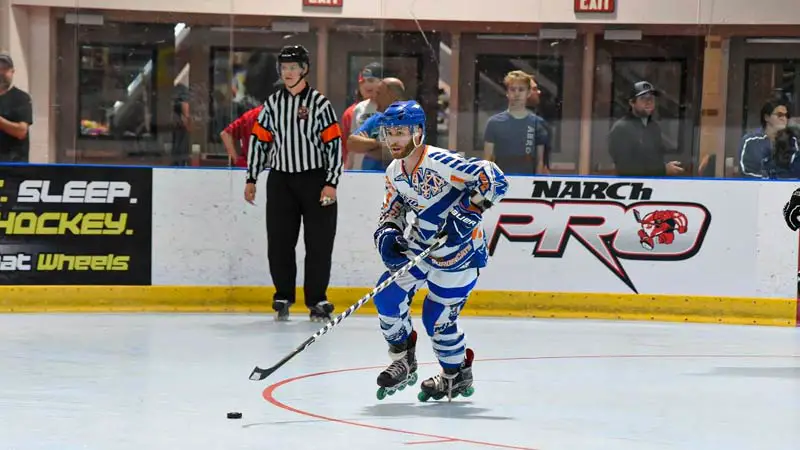
The determination of professional roller hockey salaries involves a complex interplay of factors, reflecting the unique characteristics and dynamics of the sport.
Several key elements influence the compensation levels for roller hockey players, shaping the financial landscape of this rapidly growing professional endeavor.
League Prestige and Financial Backing
The financial health and prestige of the roller hockey league play a pivotal role in determining player salaries.
Leagues with higher visibility, strong sponsorship deals, and substantial financial backing are generally able to offer more competitive compensation packages to their players.
This includes salaries, bonuses, and additional perks that contribute to the overall attractiveness of playing in a particular league.
Player Experience and Skill Level
Individual player attributes, such as experience, skill level, and reputation, significantly impact salary negotiations. Established and highly skilled players with a track record of success often command higher salaries.
Their experience and on-ice performance become key factors in determining their market value, allowing them to negotiate more favorable contracts.
Geographic Location and Cost of Living
The cost of living in different regions can influence roller hockey salaries. Players competing in leagues based in regions with higher living expenses may receive higher compensation to offset these costs.
Additionally, the geographic location can impact the overall popularity and financial viability of a league, indirectly affecting the financial resources available for player salaries.
Sponsorship and Endorsement Opportunities
Roller hockey players often supplement their incomes through sponsorship and endorsement deals. The marketability of a player, their personal brand, and their ability to attract sponsors can significantly contribute to their overall earnings.
Players with a strong social media presence, fan engagement, and marketable personalities may find additional financial opportunities beyond their base salaries.
Revenue Generation and Fan Base
The revenue generated by a roller hockey league, including ticket sales, merchandise, and broadcasting rights, plays a critical role in determining the salary cap and, consequently, individual player salaries.
Leagues with a large and engaged fan base are more likely to attract lucrative sponsorship deals and media contracts, providing a financial foundation for competitive player compensation.
The interaction of these elements creates a dynamic landscape where player compensation reflects both the economic realities of the sport and the individual value that players bring to their teams and the league.
Salary of Top Earners Vs Average Salary
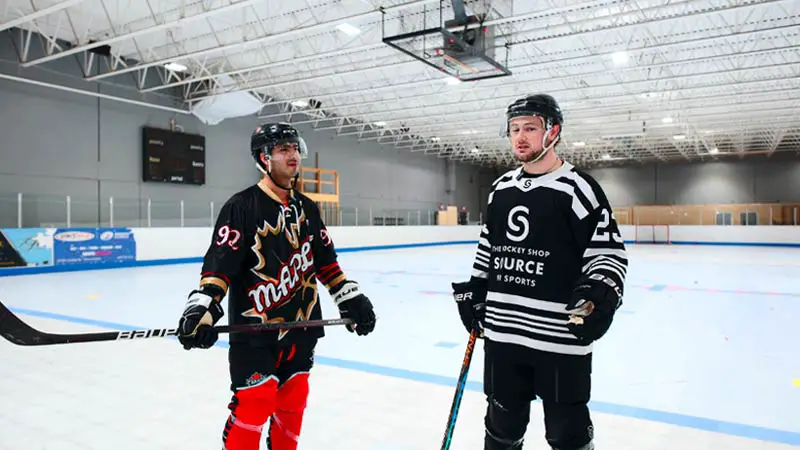
In the professional roller hockey realm, there exists a discernible disparity between the salary of top earners and the average annual earnings, highlighting the varying financial landscapes within the sport.
Top Earners
Professional roller hockey players positioned as top earners command a significant annual salary, with an impressive figure of $39,000.
This translates to a monthly income of $3,250. These players typically represent the pinnacle of the sport, possessing exceptional skills, experience, and marketability.
Their elevated salaries are often a reflection of their on-ice performance, reputation, and potential contributions to the league’s popularity and revenue.
Average Salary
Contrastingly, the average annual salary for professional roller hockey players stands at $33,137, equivalent to a monthly pay of $2,761.
This figure encompasses the broader player base, reflecting a spectrum of experience levels and skill sets.
While the average salary provides a baseline understanding of the financial landscape, it is subject to fluctuations based on league dynamics, geographic location, and other contributing factors.
The discrepancy between top earners and the average salary in professional roller hockey mirrors the economic realities and hierarchical structure within the sport.
While top earners enjoy lucrative compensation for their exceptional contributions, the average salary represents the more commonplace financial standing of players within the professional roller hockey community.
Challenges Faced by Roller Hockey Players in Negotiating Salaries
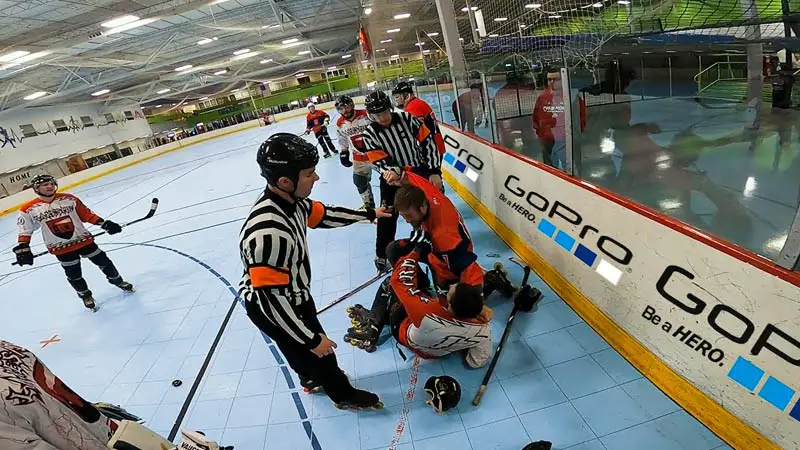
Negotiating salaries in professional roller hockey poses unique challenges for players, stemming from the sport’s dynamic landscape and varying financial structures.
These challenges require players to navigate a complex terrain where individual value, league dynamics, and economic factors intertwine.
Limited Financial Resources in Some Leagues
Roller hockey leagues, especially those in the developmental or emerging stages, may face financial constraints.
Limited resources within a league can restrict the overall salary cap, making it challenging for players to negotiate higher salaries.
Players must contend with the financial realities of their respective leagues, which may impact their ability to secure more lucrative contracts.
Reliance on Supplemental Income
Roller hockey players often supplement their salaries through sponsorships, endorsements, and participation in promotional activities.
Negotiating salaries becomes intricate as players must factor in these additional income streams, considering how endorsements and personal branding can contribute to their overall compensation.
This reliance on external income sources adds complexity to contract negotiations.
Marketability and Recognition
Negotiating salaries is intricately tied to a player’s marketability and recognition. Those with a strong personal brand and widespread popularity can leverage their image to secure better financial terms.
However, players who may be equally talented but lack visibility face the challenge of proving their market value, making negotiations a delicate balance between on-ice performance and off-ice appeal.
Shorter Career Durations and Contract Insecurity
Roller hockey players often face shorter career spans compared to athletes in more established sports. This brevity in professional longevity can contribute to contract insecurity and intensify negotiations.
Players must navigate the challenge of securing favorable terms within a limited timeframe, emphasizing the importance of negotiating contracts that reflect their contributions and potential market value.
League and Team Stability
The stability of the league and individual teams plays a crucial role in salary negotiations. Roller hockey players may face uncertainties related to team budgets, ownership changes, or even league restructuring.
Negotiating salaries becomes challenging when players are uncertain about the long-term stability and financial health of the organizations they are committing to, impacting their ability to secure favorable and stable contracts.
Navigating these challenges requires a nuanced approach that considers both on-ice performance and off-ice factors to achieve fair and sustainable compensation.
FAQs
What factors influence professional roller hockey salaries?
Professional roller hockey salaries are influenced by league financial health, player experience, geographic location, sponsorship opportunities, and overall revenue generation.
Established players with high skills and marketability often command higher salaries, contributing to the diversity in compensation levels.
How do top earners’ salaries differ from the average in roller hockey?
Top earners in professional roller hockey can command significant annual salaries, often exceeding the average.
For instance, while the average salary might be $33,137, top earners could receive $39,000 or more, reflecting their exceptional skills, experience, and marketability.
Are there additional income sources for roller hockey players beyond salaries?
Yes, roller hockey players often supplement their incomes through sponsorships, endorsements, and participation in promotional events.
Marketability, a strong personal brand, and fan engagement contribute to players securing additional income beyond their base salaries.
What challenges do roller hockey players face in negotiating salaries?
Roller hockey players navigate challenges such as limited financial resources in some leagues, reliance on supplemental income, marketability considerations, shorter career durations leading to contract insecurity, and uncertainties related to league and team stability during salary negotiations.
How do roller hockey players deal with the shorter career durations in salary negotiations?
Roller hockey players facing shorter career spans must strategically negotiate contracts that reflect their contributions within a limited timeframe.
The brevity of their careers underscores the importance of securing favorable terms, considering both on-ice performance and the potential for supplemental income sources.
Wrapping Up
In the dynamic realm of professional roller hockey salaries, the blend of skill, marketability, and economic factors paints a nuanced picture.
As we conclude this exploration, it’s evident that player compensation is a multifaceted puzzle, reflecting not only the athletes’ prowess on the rink but also the broader economic and structural dynamics of this burgeoning sport.
As roller hockey continues its ascent, the financial landscape will likely evolve, impacting how players navigate negotiations and shape their careers within this fast-paced and exhilarating discipline. Best of luck.

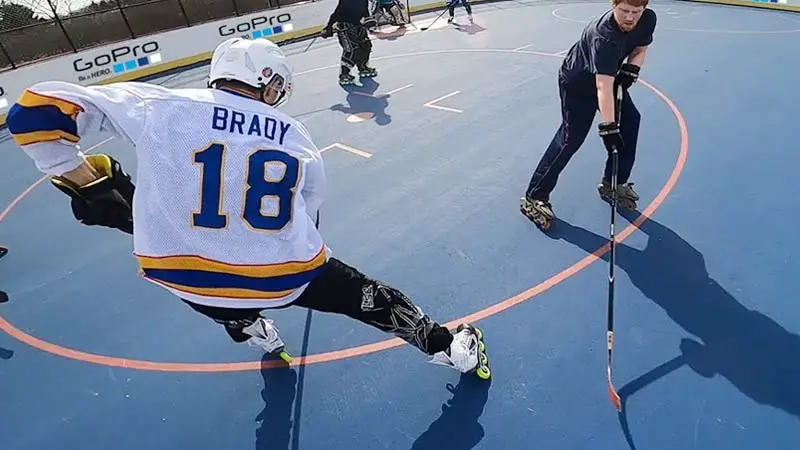




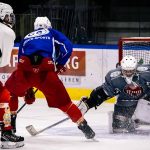

James Felix